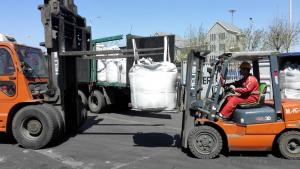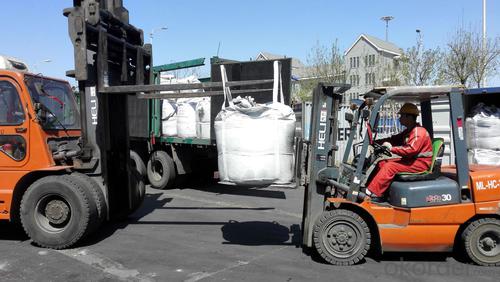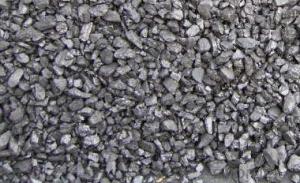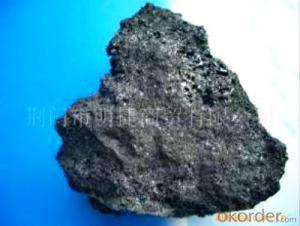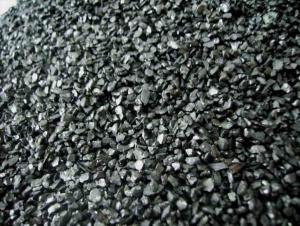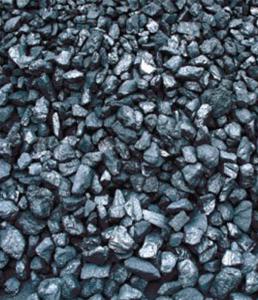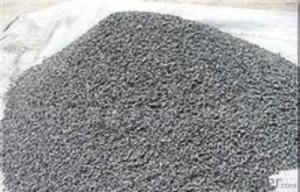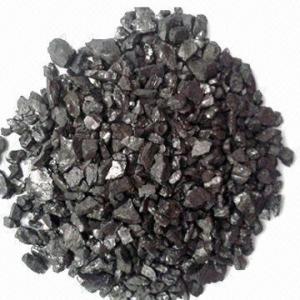China Calcined anthracite as carbon additive for steel plant
- Loading Port:
- Tianjin
- Payment Terms:
- TT OR LC
- Min Order Qty:
- 20.8
- Supply Capability:
- 1008 m.t./month
OKorder Service Pledge
OKorder Financial Service
You Might Also Like
Introduction:
Calcined anthracite can be called carbon additive, carbon raiser, recarburizer, injection coke, charging coke, gas calcined anthracite.It is playing more and more important role in the industry
Best quality Anthracite as raw materials through high temperature calcined at over 2000℃ by the DC electric calciner with results in eliminating the moisture and volatile matter from Anthracite efficiently, improving the density and the electric conductivity and strengthening the mechanical strength and anti-oxidation. It has good characteristics with low ash, low resistivity, low sulphur, high carbon and high density. It is the best material for high quality carbon products. It is used as carbon additive in steel industry or fuel.
Features:
G-High Calcined Anthracite is produced when Anthracite is calcined under the temperature of 1240°C in vertical shaft furnaces. G-High Calcined Anthracite is mainly used in electric steel ovens, water filtering, rust removal in shipbuilding and production of carbon material. It is playing more and more important role in the industry
Specifications:
F.C.% | 95MIN | 94MIN | 93MIN | 92MIN | 90MIN | 85MIN | 84MIN |
ASH % | 4MAX | 5MAX | 6 MAX | 6.5MAX | 8.5MAX | 12MAX | 13MAX |
V.M.% | 1 MAX | 1MAX | 1.0MAX | 1.5MAX | 1.5MAX | 3 MAX | 3 MAX |
SULFUR % | 0.3MAX | 0.3MAX | 0.3MAX | 0.35MAX | 0.35MAX | 0.5MAX | 0.5MAX |
MOISTURE % | 0.5MAX | 0.5MAX | 0.5MAX | 0.5MAX | 0.5MAX | 1MAX | 1MAX |
Pictures
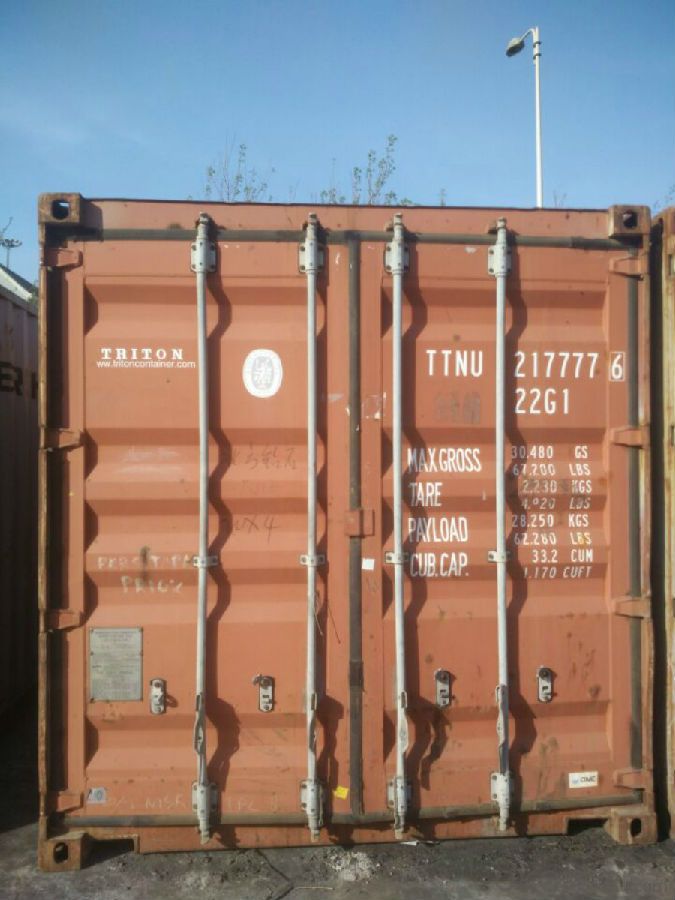
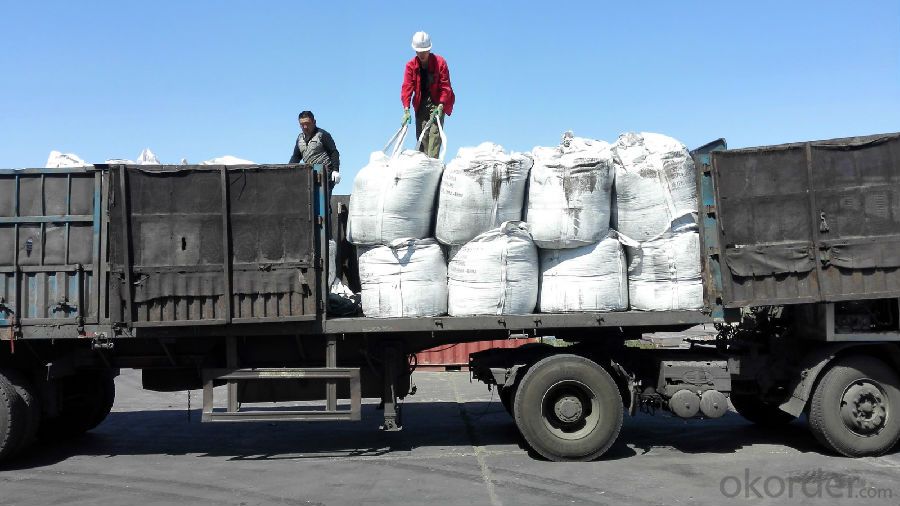
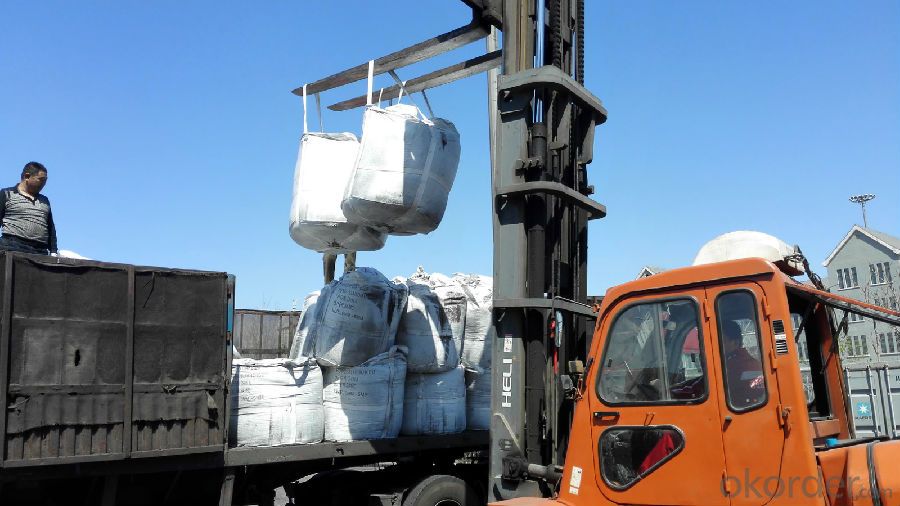
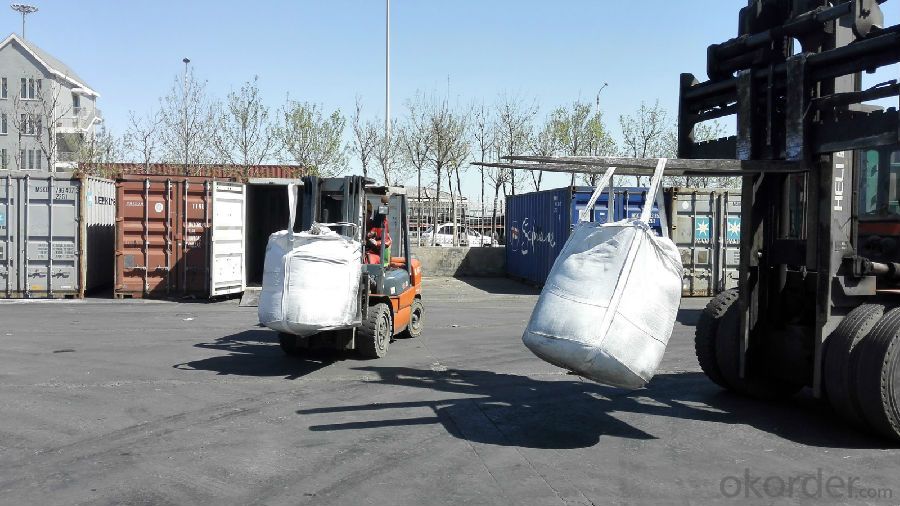
FAQ:
Packing:
(1). Waterproof jumbo bags: 800kgs~1100kgs/ bag according to different grain sizes;
(2). Waterproof PP woven bags / Paper bags: 5kg / 7.5kg / 12.5kg / 20kg / 25kg / 30kg / 50kg small bags;
(3). Small bags into jumbo bags: waterproof PP woven bags / paper bags in 800kg ~1100kg jumbo bags.
Payment terms
20% down payment and 80% against copy of B/L.
Workable LC at sight,
- Q: What are the impacts of carbon emissions on glacier retreat?
- Carbon emissions have a significant impact on glacier retreat. As carbon dioxide and other greenhouse gases are released into the atmosphere through human activities, such as burning fossil fuels and deforestation, they contribute to global warming. This increase in global temperatures has a direct effect on glaciers. Glaciers are large bodies of ice that form over long periods of time from accumulated snowfall. They act as natural reservoirs of freshwater, providing a crucial source of drinking water to millions of people around the world. However, as the Earth's temperature rises due to carbon emissions, glaciers begin to melt at an accelerated rate. The warming climate causes glaciers to lose more ice through melting than they gain through snowfall. This leads to a net loss of ice, resulting in glacier retreat. As glaciers retreat, they not only shrink in size but also become thinner. This diminishes their ability to store water, affecting water availability in regions that rely on glacial meltwater for drinking, irrigation, and hydropower generation. Furthermore, glacier retreat has far-reaching consequences for ecosystems and biodiversity. Glaciers provide unique habitats for various species, including plants, animals, and microorganisms, which have adapted to survive in these extreme environments. As glaciers disappear, these species are forced to adapt or migrate to other areas, disrupting the delicate balance of ecosystems. The impacts of glacier retreat are not limited to local or regional scales. Glacial meltwater contributes to rivers and lakes, ensuring a consistent flow of water throughout the year. As glaciers shrink, this flow decreases, leading to water scarcity during dry seasons. This poses a threat to agriculture, urban water supplies, and the overall sustainability of ecosystems that rely on a stable water supply. Additionally, the loss of glaciers contributes to rising sea levels. When glaciers melt, the water they release flows into the oceans, causing them to expand. This exacerbates coastal erosion, increases the risk of flooding in low-lying areas, and threatens coastal communities and infrastructure. In summary, carbon emissions have a profound impact on glacier retreat. The resulting global warming accelerates the melting of glaciers, leading to water scarcity, biodiversity loss, increased sea levels, and various environmental and socio-economic consequences. It is crucial to address carbon emissions and take steps to mitigate climate change to preserve these vital ice formations and the ecosystems and communities that depend on them.
- Q: What is carbon fixation in biology?
- The process of carbon fixation in biology involves the conversion of atmospheric carbon dioxide (CO2) into organic compounds by living organisms. This is a crucial step in the global carbon cycle and is primarily carried out by autotrophic organisms such as plants, algae, and certain bacteria. During the process of carbon fixation, the enzyme RuBisCO (ribulose-1,5-bisphosphate carboxylase/oxygenase) facilitates the reaction between CO2 and a five-carbon sugar molecule called ribulose bisphosphate (RuBP). This reaction produces two molecules of a three-carbon compound known as 3-phosphoglycerate (3-PGA). This initial step is referred to as the Calvin cycle or C3 photosynthesis. In plants, the 3-PGA molecules are then transformed into other organic compounds, including sugars, starches, and cellulose, through a series of enzymatic reactions. These organic compounds serve as the building blocks for the growth and development of the plant. Carbon fixation plays a crucial role in maintaining a balance of atmospheric CO2 levels and is a key process in regulating climate change. It allows for the transfer of carbon from the atmosphere to the biosphere, ultimately reducing the concentration of greenhouse gases and mitigating the impacts of global warming. Additionally, carbon fixation is essential for sustaining life on Earth as it forms the basis of food chains and supports the growth of other organisms. Heterotrophs, such as animals and humans, rely on the organic compounds produced by autotrophs through carbon fixation for their energy and nutritional requirements. In conclusion, carbon fixation is a fundamental biological process that facilitates the conversion of atmospheric carbon dioxide into organic compounds. It sustains life on Earth and aids in the regulation of the planet's climate.
- Q: What are the consequences of increased carbon emissions on coral reefs?
- Coral reefs are severely impacted by the increased emission of carbon, resulting in numerous consequences. One major effect is the occurrence of ocean acidification, which happens when excess carbon dioxide is absorbed by seawater, causing a decrease in pH levels. This acidification hampers the ability of corals to construct their calcium carbonate skeletons, making them more susceptible to erosion and breakage. Moreover, elevated levels of carbon dioxide in the atmosphere contribute to global warming, leading to the rise of ocean temperatures. Consequently, coral bleaching occurs as corals expel the symbiotic algae responsible for their vibrant colors. Without these algae, corals become stressed, lose their color, and become more vulnerable to disease and death. Additionally, increased carbon emissions contribute to alterations in ocean currents and weather patterns, resulting in more frequent and intense storms. These storms physically damage coral reefs, causing further destruction to already fragile ecosystems. The consequences of increased carbon emissions on coral reefs are profound and devastating. The decline of coral reefs not only impacts the biodiversity of the oceans but also has significant implications for human populations that rely on reefs for sustenance, income, coastal protection, and tourism. It is imperative to reduce carbon emissions and take immediate action to safeguard and preserve these invaluable ecosystems.
- Q: How does carbon impact biodiversity?
- Carbon impacts biodiversity in several ways. Firstly, carbon dioxide is a greenhouse gas that contributes to climate change, leading to shifts in temperature and precipitation patterns. These changes can disrupt ecosystems and alter habitats, affecting the distribution and survival of various species. Additionally, excess carbon in the atmosphere can lead to ocean acidification, which negatively affects marine biodiversity by harming coral reefs and other organisms reliant on calcium carbonate structures. Finally, deforestation and land-use changes associated with carbon emissions result in habitat loss, further reducing biodiversity. Overall, carbon emissions have significant and detrimental impacts on the delicate balance of ecosystems and the diversity of life on Earth.
- Q: How does carbon impact air quality?
- Carbon impacts air quality through the release of carbon dioxide (CO2) and other greenhouse gases during the combustion of fossil fuels. These emissions contribute to the greenhouse effect, trapping heat in the atmosphere and causing global warming. Additionally, carbon particles from incomplete combustion, like soot, can reduce air quality by causing respiratory issues and forming smog.
- Q: What is carbon nanocomposite?
- Carbon nanocomposite refers to a type of material that combines carbon nanotubes or graphene with a matrix material, such as polymers or metals, to form a composite material. The carbon nanotubes or graphene are typically added in small amounts, often in the form of nanoparticles, to enhance the mechanical, electrical, and thermal properties of the composite material. Carbon nanotubes are cylindrical structures made up of carbon atoms arranged in a hexagonal lattice, while graphene is a single layer of carbon atoms arranged in a two-dimensional lattice. These carbon-based materials possess exceptional properties, such as high strength, electrical conductivity, and thermal conductivity. When incorporated into a composite material, these properties can be transferred to the overall structure, resulting in improved performance. The use of carbon nanocomposites has been explored in various industries and applications. In aerospace, for example, these materials have been investigated for their lightweight and high-strength properties, which could potentially enhance the fuel efficiency and durability of aircraft components. In electronics, carbon nanocomposites have shown promise for developing high-performance sensors, conductive films, and energy storage devices. Additionally, they have been studied for their potential applications in medical devices, automotive parts, and energy storage systems. Overall, carbon nanocomposites offer the opportunity to create materials with enhanced properties by leveraging the unique characteristics of carbon nanotubes or graphene. However, the production and scalability of these materials still pose challenges, and further research is needed to optimize their performance and cost-effectiveness for various applications.
- Q: What are the impacts of carbon emissions on the stability of tundra ecosystems?
- The impacts of carbon emissions on the stability of tundra ecosystems are significant and wide-ranging. Carbon emissions, primarily in the form of greenhouse gases such as carbon dioxide and methane, contribute to global warming and climate change. As a result, the tundra ecosystems, which are particularly vulnerable to temperature changes, experience several negative effects. Firstly, increased carbon emissions lead to rising temperatures, causing the permafrost in the tundra to thaw. Permafrost is a layer of permanently frozen soil that acts as a foundation for the tundra ecosystem. When it thaws, the stability of the entire ecosystem is compromised. The ground becomes unstable, leading to collapsing landscapes, landslides, and altered drainage patterns. This can disrupt plant and animal habitats, as well as impact the distribution of water resources. Secondly, as permafrost thaws, organic matter that has been frozen for thousands of years starts to decompose. This decomposition process releases large amounts of carbon dioxide and methane into the atmosphere, further exacerbating the greenhouse effect. This positive feedback loop accelerates climate change and contributes to the overall increase in carbon emissions. Furthermore, the thawing of permafrost also affects the vegetation in tundra ecosystems. Many plant species in the tundra rely on the permafrost layer for stability and nutrient availability. With its degradation, plants face difficulties in establishing and maintaining their root systems. This, in turn, reduces plant productivity and alters the composition of plant communities. Changes in vegetation can impact wildlife, such as reindeer, caribou, and migratory birds, which depend on specific plant species for food and shelter. Additionally, the increased thawing of permafrost releases previously trapped pollutants and contaminants, which can further harm the stability of tundra ecosystems. These pollutants, such as heavy metals and toxic chemicals, can enter waterways and affect aquatic life, disrupting the delicate balance of the ecosystem. Overall, carbon emissions contribute to the destabilization of tundra ecosystems through the thawing of permafrost, alteration of vegetation, release of greenhouse gases, and contamination of water resources. These impacts not only affect the tundra's unique biodiversity but also have implications for global climate change. It is crucial to reduce carbon emissions and mitigate the effects of climate change to preserve the stability and integrity of these fragile ecosystems.
- Q: How does carbon affect the formation of blizzards?
- Blizzards, characterized by strong winds, low temperatures, and heavy snowfall, are not directly affected by carbon. Blizzards typically occur when a low-pressure system moves into an area with enough moisture and cold air. Temperature, moisture, and wind patterns are the main factors that influence the formation of blizzards. Nevertheless, carbon emissions and their impact on the climate can indirectly affect the frequency and intensity of blizzards. Carbon dioxide (CO2) and other greenhouse gases trap heat in the atmosphere, causing global warming. This warming effect can change weather patterns, including the conditions required for blizzard formation. Carbon emissions can lead to warmer temperatures, altering precipitation patterns and increasing moisture in the atmosphere. This additional moisture, along with the necessary cold air, can contribute to heavier snowfall during blizzards. Furthermore, climate change can influence wind patterns, impacting the intensity and duration of blizzards. Changes in atmospheric circulation patterns can modify the tracks and strength of storms, potentially resulting in more or fewer blizzard events in specific regions. It is worth noting that the specific impact of carbon emissions on blizzard formation varies depending on regional and local factors. The intricate nature of weather systems and the interaction between different variables make it difficult to attribute any single weather event solely to carbon emissions. However, the overall influence of carbon emissions on the climate system increases the potential for more extreme weather events, including blizzards.
- Q: How does carbon affect ocean acidification?
- Various human activities, such as burning fossil fuels and deforestation, release carbon dioxide (CO2) into the atmosphere. This CO2 is a greenhouse gas that, when absorbed by the oceans, leads to a process called ocean acidification. When CO2 dissolves in seawater, it reacts with water molecules and forms carbonic acid. This reaction increases the concentration of hydrogen ions (H+), resulting in a decrease in pH levels and making the seawater more acidic. This decrease in pH is a key characteristic of ocean acidification. As the ocean becomes more acidic, it disrupts the delicate chemical balance that many marine organisms rely on for survival and growth. Organisms like corals, shellfish, and phytoplankton use calcium carbonate to build their shells or skeletons, but increased acidity hampers their ability to do so. Ocean acidification also impacts the growth and development of marine plants and animals. For instance, changes in pH levels can affect the ability of larvae from certain marine species to form strong shells or skeletons. Additionally, acidified waters can disrupt the metabolism and reproductive processes of many marine organisms. The consequences of ocean acidification extend beyond individual organisms. Entire ecosystems, such as coral reefs, face threats due to increasing acidity. Coral reefs provide habitat for numerous species and are vital to marine biodiversity. However, the more acidic conditions make it challenging for corals to build and maintain their calcium carbonate structures, resulting in coral bleaching and degradation of reef systems. Moreover, ocean acidification can have cascading effects on other marine organisms and food webs. For example, changes in the growth and survival rates of phytoplankton, a primary food source for many marine species, can disrupt the entire food chain, impacting fish populations and ultimately affecting human communities that rely on seafood for sustenance and livelihoods. In conclusion, the rise in carbon dioxide emissions contributes to ocean acidification, which alters the chemistry of the oceans and poses significant threats to marine life and ecosystems. Understanding and addressing the causes and impacts of ocean acidification are essential for the long-term health and sustainability of our oceans.
- Q: How is carbon used in water filtration systems?
- Carbon is commonly used in water filtration systems due to its impressive adsorption properties. Adsorption involves the molecules of a substance binding to the surface of another material, in this case, carbon. Activated carbon, which is carbon that has been specially processed to create a large surface area, is particularly effective in water filtration. When water passes through the filtration system, the carbon captures and retains a wide range of impurities, including organic compounds, chlorine, volatile organic compounds (VOCs), and certain heavy metals. This adsorption process helps to remove unpleasant odors and tastes from the water, making it more palatable. Carbon also plays a crucial role in removing potentially harmful contaminants such as pesticides, herbicides, and pharmaceutical residues. Additionally, carbon filtration systems can help reduce the risk of waterborne illnesses by removing bacteria, viruses, and parasites. Overall, carbon is an essential component of water filtration systems as it significantly improves the quality and safety of drinking water.
Send your message to us
China Calcined anthracite as carbon additive for steel plant
- Loading Port:
- Tianjin
- Payment Terms:
- TT OR LC
- Min Order Qty:
- 20.8
- Supply Capability:
- 1008 m.t./month
OKorder Service Pledge
OKorder Financial Service
Similar products
Hot products
Hot Searches
